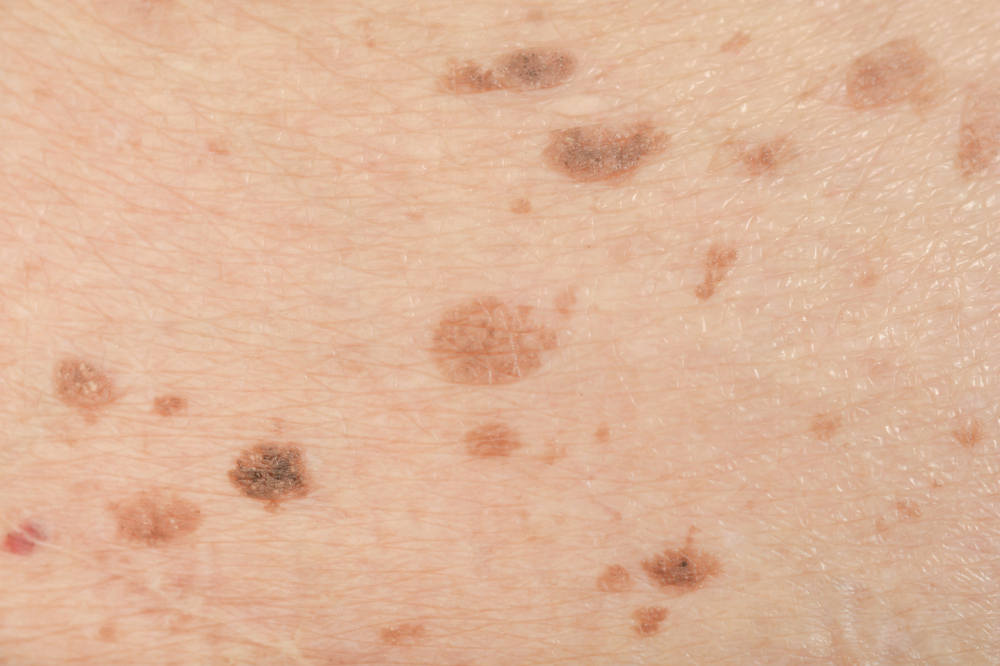Liver spot or birthmark – what is the difference? How do I keep an eye on the pigment spots to avoid getting skin cancer? And what should I do if they change and the dermatologist wants to remove them?
How does a liver spot or birthmark develop?
Moles and birthmarks (“nevus”) form when many pigment-forming cells are concentrated in the same area of the skin. The body’s own dye melanin is responsible for the dark coloring of the skin. We find them in different sizes and shapes spread over the body.
Birthmark and liver spot (mole) – are there differences?
Birthmark, liver spot, pigment spot – all one? From a medical point of view, it is like this: birthmarks and liver spots are pigment spots, but a birthmark develops before birth. A mole only develops in the course of life.
Where did they all come from?
- In general, the skin type often determines the amount of moles. The lighter a skin is, the more brown spots can be found on the body.
- In the course of our lives, the number of moles increases due to sun exposure and hormonal influences.
- Many women notice that the small skin marks increase during pregnancy.
- British researchers found out in a study – people with liver spots have fewer wrinkles. Logically – who minimizes UV radiation, reduces also the aging process of the skin.
- Most people have about 30 and 40 moles.
- 15 percent of the white population have more than 100 of these brown spots.
Harmless? What does the liver spot look like?
- If a mole (live spot) changes in color or shape, caution is generally advised.
- Skin marks with a diameter of over five millimeters should be checked regularly.
- The dark spot is not round, but one half looks completely different from the other? This characteristic is an indication of black skin cancer (malignant melanoma).
- The outer borders of the mole appear blurred or frayed? If the border shows irregularities or the skin is horny or scaly, a dermatologist should examine it.
- If the mole is raised (stands high like a knob) and changes its size, a check is advisable.
- The dermatologist examines moles and birthmarks according to the ABCD(E) rule. A stands for asymmetry, B for limitation, C for color, D for diameter and E for elevation.
Skin cancer screening: How often should the dermatologist check the marks?
Of course, it is important to keep an eye on liver spots yourself, but in principle a dermatologist should do this regularly during skin cancer screening. This can be done every two years free of charge for those with statutory health insurance from the age of 35 and is recommended by dermatologists. Important: Before the screening remove nail polish and body jewelry, it can cover skin areas. Do not use make-up.
What can skin cancer apps do?
Actually, it sounds like a great invention: For some time now, screening apps for skin cancer detection have been available that can check photos of liver spots.
And this is how it works: the app compares the images with photos from a database, looks for similarities with existing images and thus assesses the risk of skin cancer. Users also have to answer questions about lifestyle and health. Dermatologists take a critical view of the apps and warn of handling errors and patients left alone after a diagnosis.
Liver spot or birthmark removal – these possibilities exist
If the dermatologist advises to have the mole or birthmark removed, this is a preventive measure to avoid getting skin cancer. Sometimes patients choose to have the mole or mole removed for cosmetic reasons. There are basically two different methods of treatment – depending on the size, the dermatologist or aesthetic surgeon recommends which method is suitable.
- The most commonly used method is excision, the surgical removal of liver spots. It is the only method of treatment that removes the complete growth from the skin. (Treatment under anesthesia, duration: approx. 30 minutes).
- Laser removal of liver spots: The birthmark/liver spot is lasered away, with the disadvantage that no subsequent examination for skin cancer can be performed in the laboratory. This method is therefore only suitable for removal for aesthetic reasons. It is essential to choose an experienced dermatologist. The costs are about 150-400 USD per mole.

